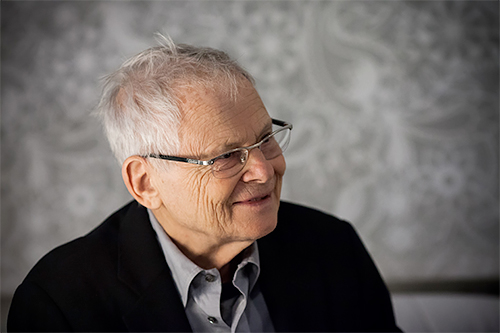An activist as well as documentarian,
Steve Schapiro covered many stories related the Civil Rights movement as well as more than 200 films. Now available in a popular edition by Taschen,
The Fire Next Time with James Baldwin's frank account of the black experience and Schapiro's vital images, the book offers poetic and potent testimony to one of the most important struggles of American society.
Coinciding with the release of Schapiro's new photo book, we asked him a few questions about his life and work.
All About Photo: Tell us about your first introduction to photography. What drew you into this world?
Steve Schapiro: I took my first snapshots when I was nine years old at summer camp. I liked to take pictures of clouds. We developed our own film and it was amazing to see real images emerge from the clear chemical water.
Where did you study photography?
I did not really study photography but in 1960 I did take a course with w.eugene smith at his loft in new york. he taught me how to print to bring out rich dark blacks and good clean whites, but more than that he gave me a sense of humanity and the human condition
Do you remember your first shot? What was it?
My first favorite shot was taken in Spain in 1955. It was of three boys on a hill bathed in shadow and sunlight. It had both strong design and an emotional sense. I still like that photo very much.
Do you have a mentor or role model?
There are many roll models I've had. As a teenager the most important book for me was Cartier Bresson's The Decisive Moment. and then, like many photographers of my generation, there was Robert Frank. I also learnt from Walker Evans, Bill Brant and many others, all of whom developed both style and content.
In documentary photography sometimes more than showing just the face of your subject, if you visually show aspects of the world around him, it might make for a stronger photograph.
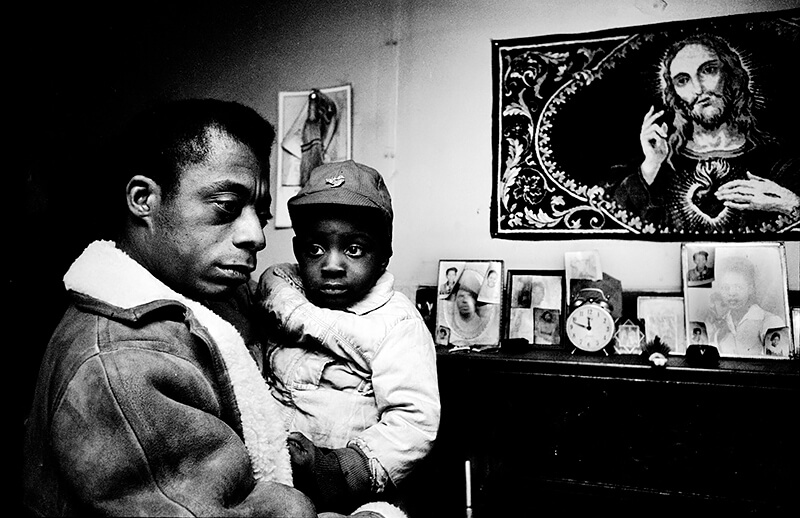
Abandoned Child © Steve Schapiro
Be yourself, we all have a unique point of view different from others. Two photographers can be standing next to each other and come up with entirely different images. It is important to photograph things you most care about for those photos which you are emotionally involved will be the most successful.
What inspires your unique storytelling?
The human condition and an inquisitive nature.
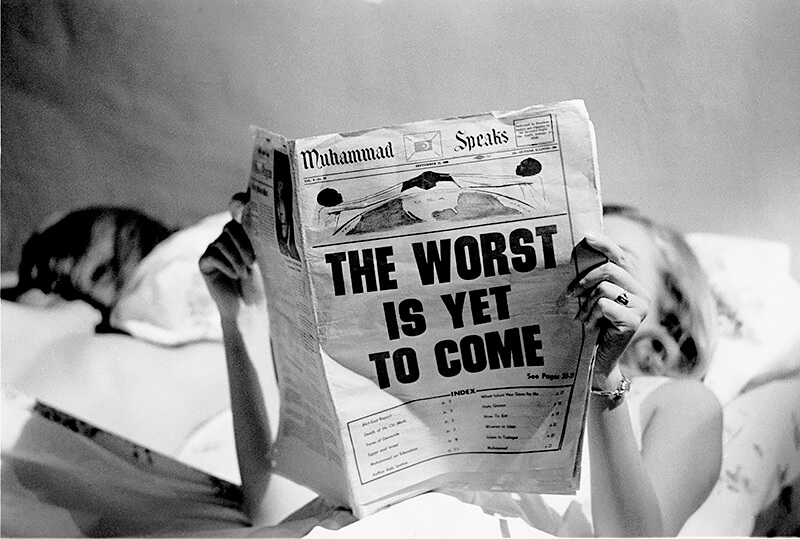
Worst is Yet to Come, New York 1966 © Steve Schapiro
I have always cared most about documenting stories about people and the world we live in.
When 'Life,' 'Look' and most other picture magazines disappeared at the end of the 60's, there was no place for photo essays to go or be seen. Unless they were about war, politics, or hunger. Most magazines began using one photo to tell a story rather than giving space to a more detailed sense of the subject. That one photo was there to give you information first, with emotion and design only as secondary considerations.
I turned to Hollywood for survival that said, I try to capture the spirit of the person or the event I am seeing and try to take my time waiting for the right visual and emotional moments to occur. Sometimes that is a long wait.
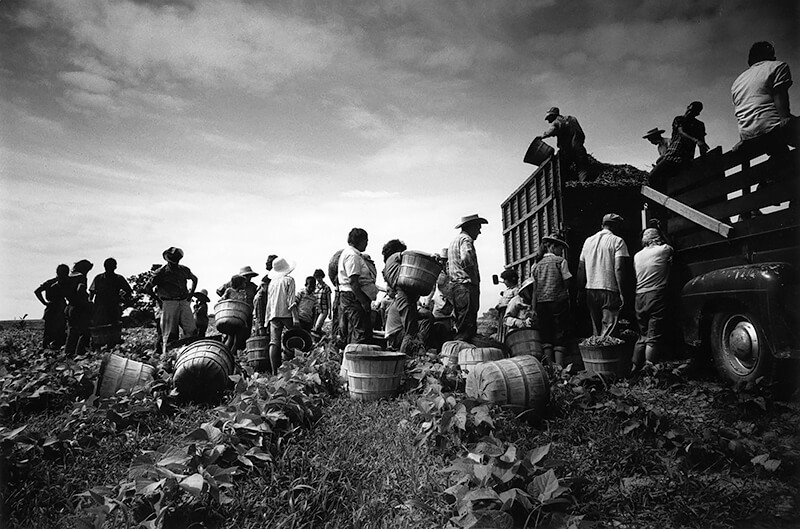
Bean Pickers © Steve Schapiro
For me, there is no real difference between photographing a documentary situation like the 1965 Selma March, or the godfather film set. You are looking for the same things, the spirit of the event or person.
The only difference is that in the real world you don't always know what might happen in the next few minutes, but working on a film sound stage, if you've read the script you have a good idea...
Which body of work are you most proud of?
I am very lucky to have photographed many iconic people and many iconic events.
Probably when all is said and done, photographing the Civil Rights movement in the 60's and Black Lives Matter today, might have the most importance. But I have had many great moments. I traveled with Bobby Kennedy on his presidential run, who I miss dearly. There was Andy Warhol, Muhammad Ali, Bowie and many others who I was fortunate to spend time with.
My very first story was a self-assignment. I went to Arkansas and spent four weeks at a migrant worker camp. A small catholic magazine Jubilee published the photo story, giving it eight pages. The New York Times Magazine picked it up and used one of the photos for its cover. This self-assigned story helped me get started professionally.
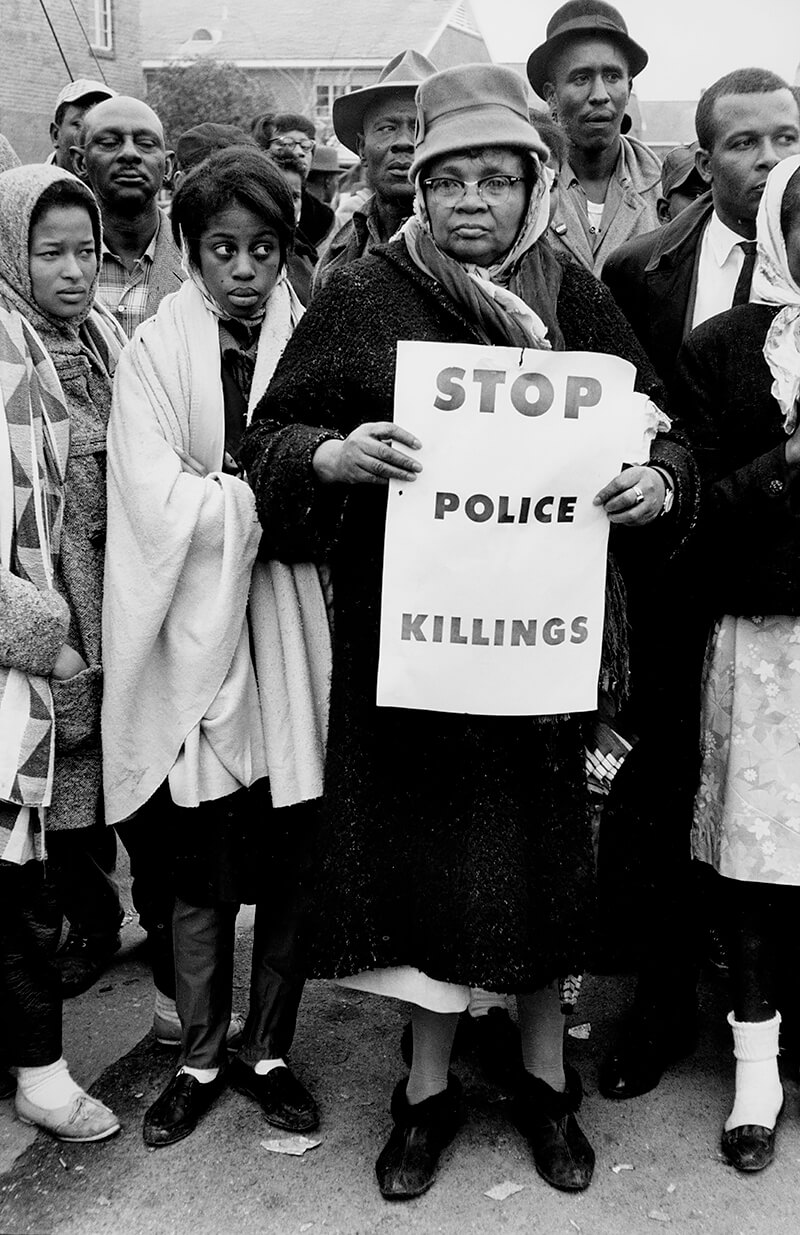
Stop Police Killings © Steve Schapiro
I had just really started freelancing for Life when in late 1962 I read James Baldwin's essay in the New Yorker Magazine where he talked about how he saw the black situation in America. It affected me.
I asked Life if I could do a photo essay with Baldwin. They and he agreed. So in January 1963, I started traveling with him, starting in Harlem and traveling to North Carolina, Mississippi and New Orleans while he was engaged in a speaking tour. Jimmy was my introduction to the Civil Rights movement. I saw what he saw, and it encouraged me to come back again and again to the south and to document events that were happening there.
Did you choose the images for the book together?
The book came out two years ago, long after Baldwin was no longer with us. The photos showed what I had seen with Baldwin and after with the non-violent struggle, and the killing of Martin Luther King.
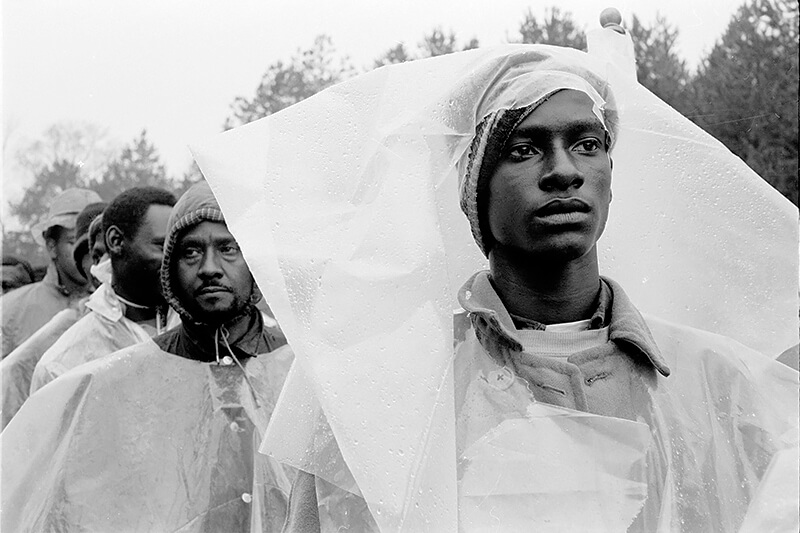
Marchers in Rain © Steve Schapiro
I think you learn many things with time. In the 60's when I covered an event, my primary thought was to try to get the best possible pictures with the hope that my photos would appear in the next week's magazine. In the 60's there were no photo galleries and no real interest in photographs as art or even as collectables.
If you covered a historical event, it might take years to learn that you had indeed covered an important moment. for learning its full significance might not have been obvious at the time.
Many of my best Civil Rights photographs from the 60's that now appear in my latest book (with Baldwin,) The Fire Next Time , I only recently found in my contact sheet books some four years ago. Many of the choices made today are far different from the image choices made at that time.
While Martin Luther King Jr. was a prominent both emotional and significant public leader, James Baldwin was much more behind the scenes and his advice and influence during that time period is now much more apparent.
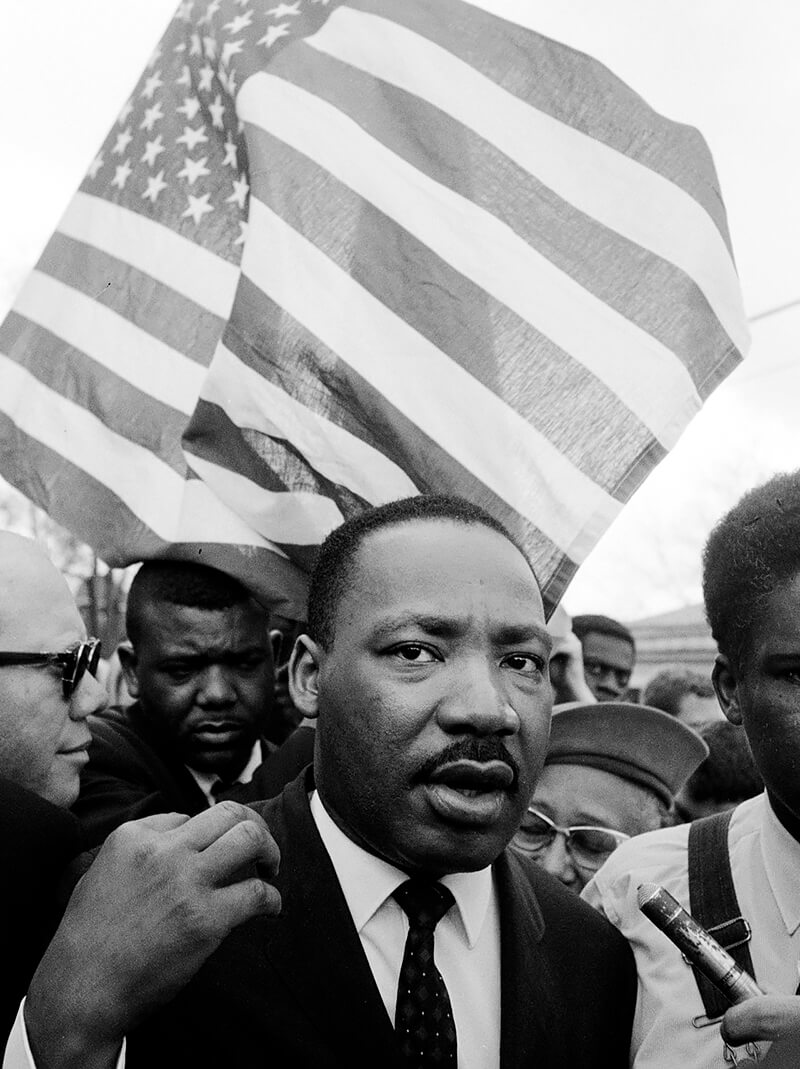
King with a flag © Steve Schapiro
The 60's opened with enormous hope and excitement which President Kennedy gave to us. The 60's ended with horrendous sadness with the assasination of Dr. King, Bobby Kennedy and Malcolm X.
In the middle of that decade we had great music and great new influences in art. President Johnson signed the voting act as a result of the 1965 Selma March.
What are the biggest differences for you between now and then? Things that haven't changed?
The iphone is ten years old and social media has changed everything.
I still don't understand how gps. can give very personal driving instructions to millions of people at exactly the same time seeing all the roads in front of you and what specific street to turn left onto.
24 hour cable news has turned into heavily oopinionated reporting on all sides. We are about to have driverless cars.
What has changed also, is more realization of the importance of the family unit. We see so many situations where because the family has disintegrated and the father is no longfer there, the affect is devasting to childen and can possibly lead them to make bad choices.
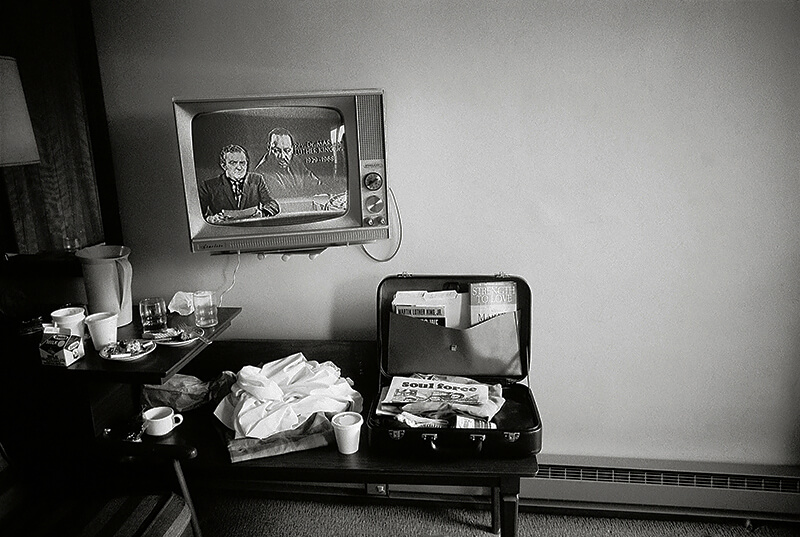
MLK Motel room © Steve Schapiro
I respect people like father Pfleger on Chicago's south side for his moral voice in a time when people have a 'what's in it for me' attitude.
We see people in government, religion and corporations take positions to maintain their jobs or position, knowing in their hearts that they are not acting for the public or moral good.
you managed to capture movement, anger, fear, how did you get so close to people?
Smile a lot and don't get too involved with your equipment. I always try to be on the wave length with the subject I am working with, if possible.
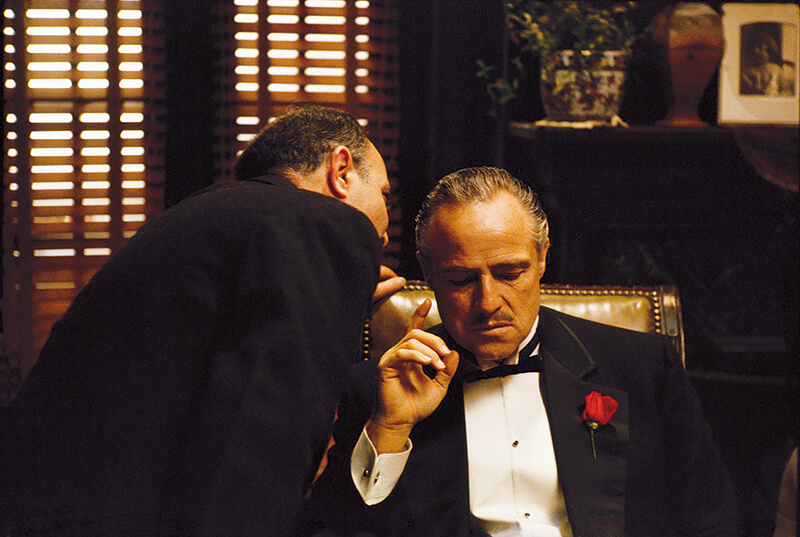
The Whisper, The Godfather, New York 1971 © Steve Schapiro
I've photographed segregationalists in St. Augustine, Florida and presented them as they saw themselves, and on the same day I photographed students trying to desegregate a restaurant and saw them led out into into the police paddy wagon with no anger or hate. On their part, just a realization that prevaling in all important things often takes time.
People look at photographs and think of them as truth but really what determines the truth of a photograph is the moment when the photographer presses the shutter button. He can make you look happy or sad in the final image that other will see. We all have internal opinions and prejudices but I think you should try to stay as objective as you possibly can.
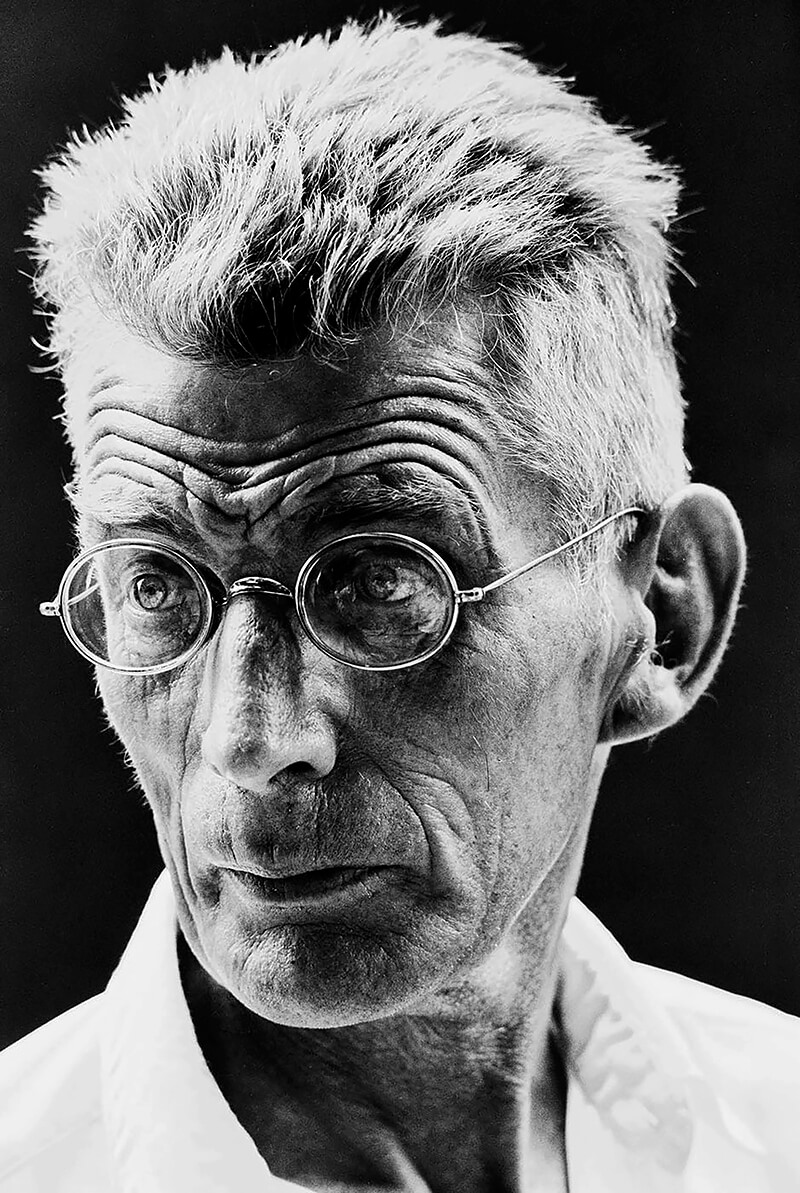
Beckett portrait © Steve Schapiro
I often don't know why a photograph becomes iconic.
With the explosion in midair of the Hindenburg dirigible, it becomes obvious. But sometimes a simple little portrait captures our heartstrings and then we see it reproduced over and over again and it gains that iconic status. Look at the Warhol entourage photo included here as a perfect example of a photo I am told has reached that status.
Do you have a favorite image? If so which one?
Lots of them. 'Vote' from the Selma March, the 'Warhol entourage' photo
'Bowie blue.', James Baldwin Do you love me and most recently the 2018 I'm still alive' photo from last year's protest march in Chicago.
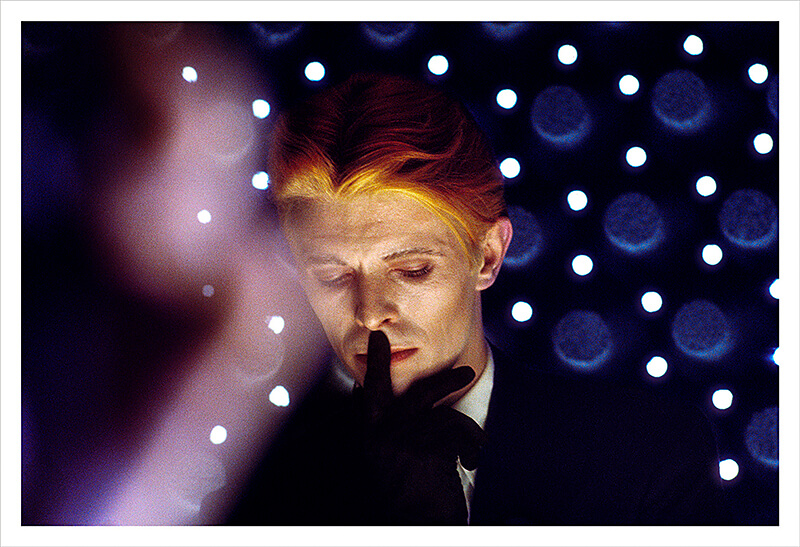
Bowie Blue, New Mexico 1975 © Steve Schapiro
Right now digital cameras.
Do you prefer to work in color or black and white?
I prefer black and white but some subjects call for color. You have to think differently with each of the two. If you are photographing an emotional situation between people in color and someone walks behind them in a red jacket, your eye will go to the red jacket first, and not to the emotional situation you wanted to convey.
Black and white is very effective when there is contrast in the photo.
If a color photo has subtle tones and very little contrast it may not work as well in black and white.
Do you spend a lot of time editing your work?
Editing is part of the whole picture. When I worked for Life they edited everything and I felt they often missed the best picture.
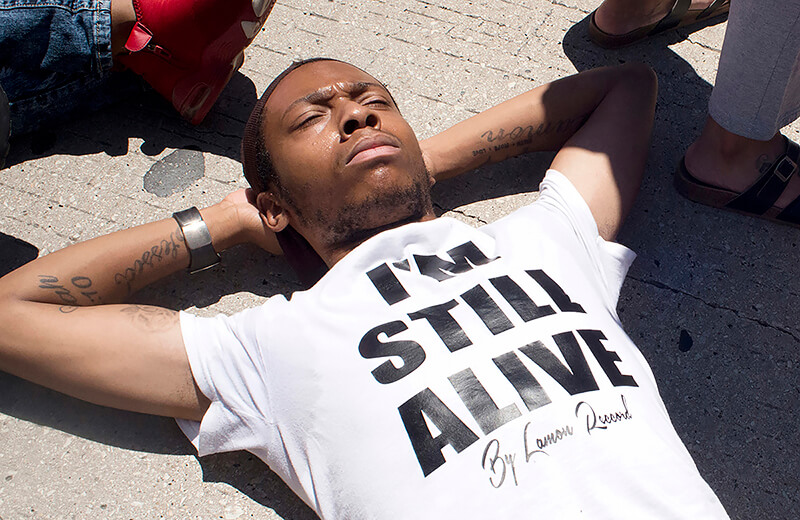
I am still alive © Steve Schapiro
Eight years ago, when Irving Penn autographed his book for me and wrote with the admiration and best wishes of a colleage. That time in my life it meant a lot to me.
What advice would you give someone who would like to become a photographer today?
Use your unique point of view and do what you really care about.
What mistake should a young photographer avoid?
Mistakes are good for you, you learn from them
Your best memory as a photographer?
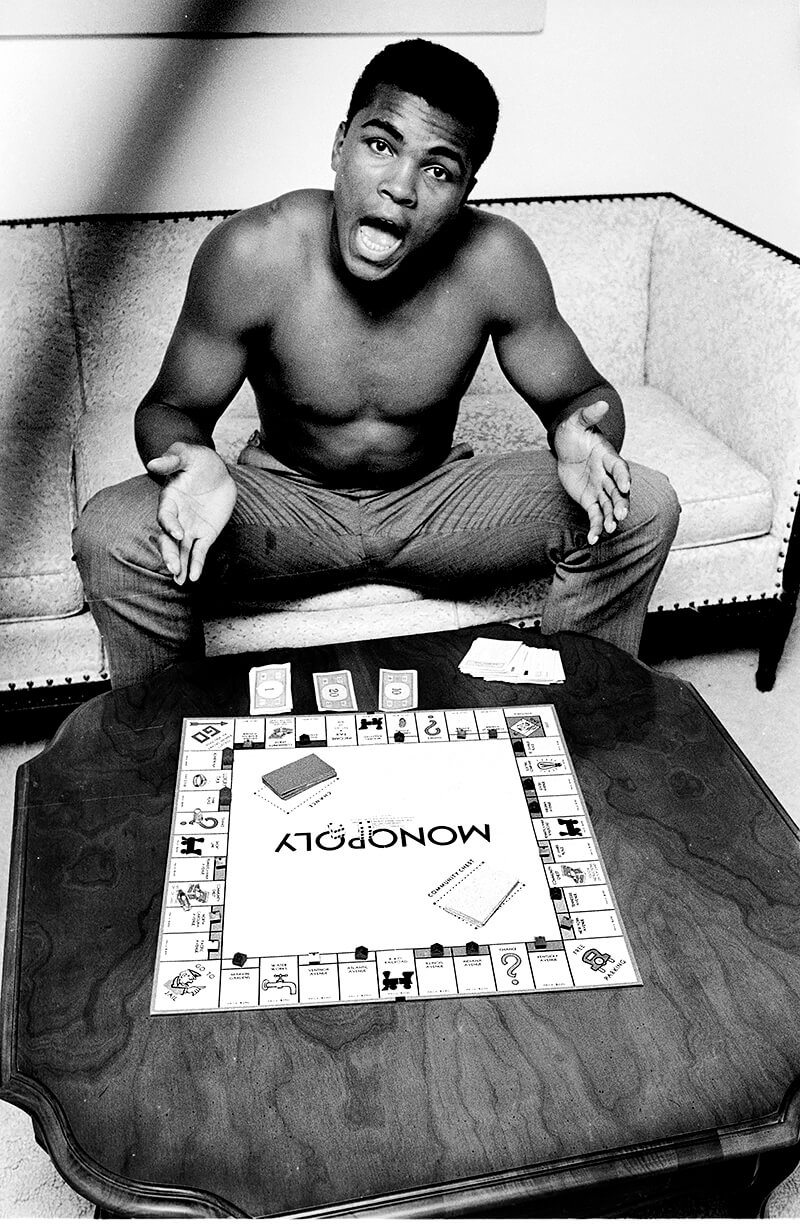
Ali Monopoly © Steve Schapiro
Receiving the James Joyce Humanitarian Award in Dublin
Your worst souvenir as a photographer?
The deaths of those who gave so much to the world
What are your upcoming projects?
Protest and new book projects on social justice heroes and New York
What 3 words describe your photography style?
Fly on wall (if possible)
If you weren't a photographer, what would you be doing?
Tap Dancing
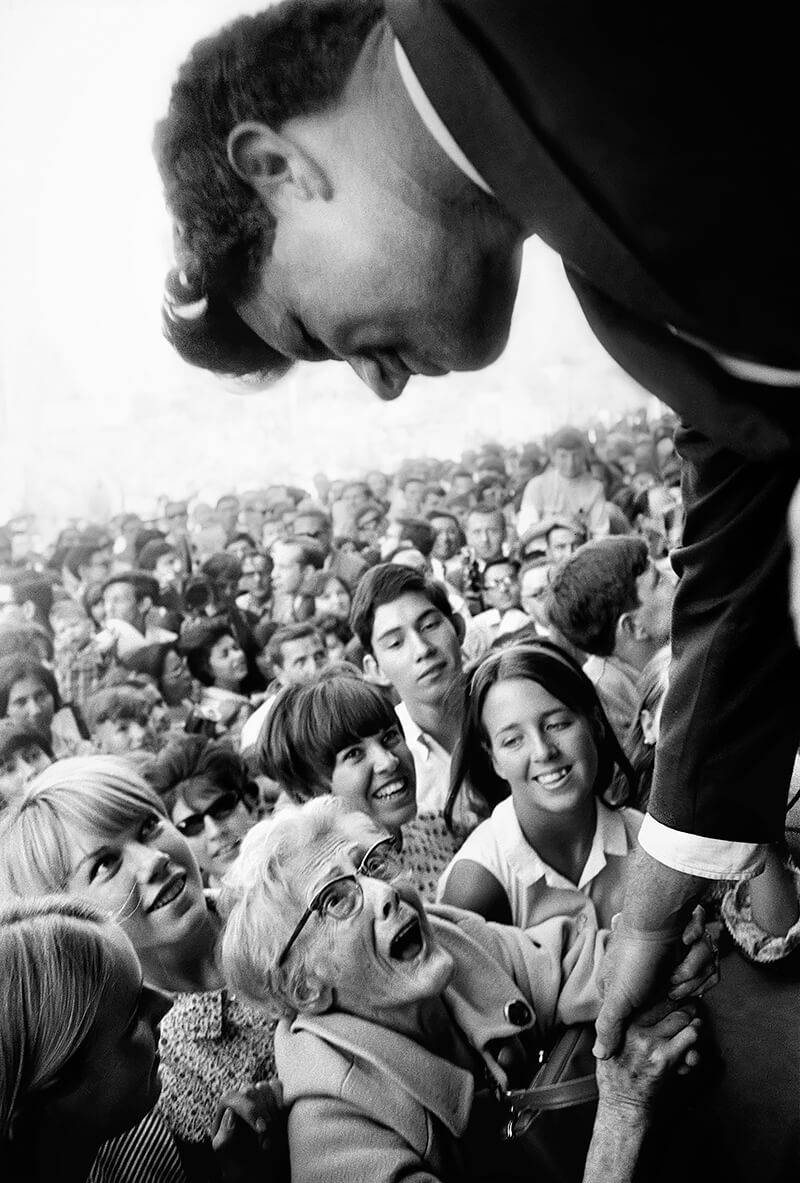
Kennedy and old lady © Steve Schapiro
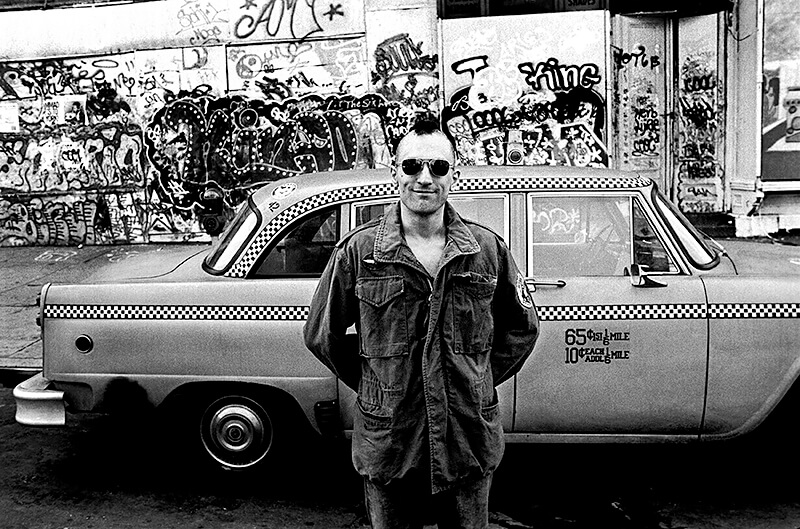
DeNiro, Cab, Graffiti © Steve Schapiro
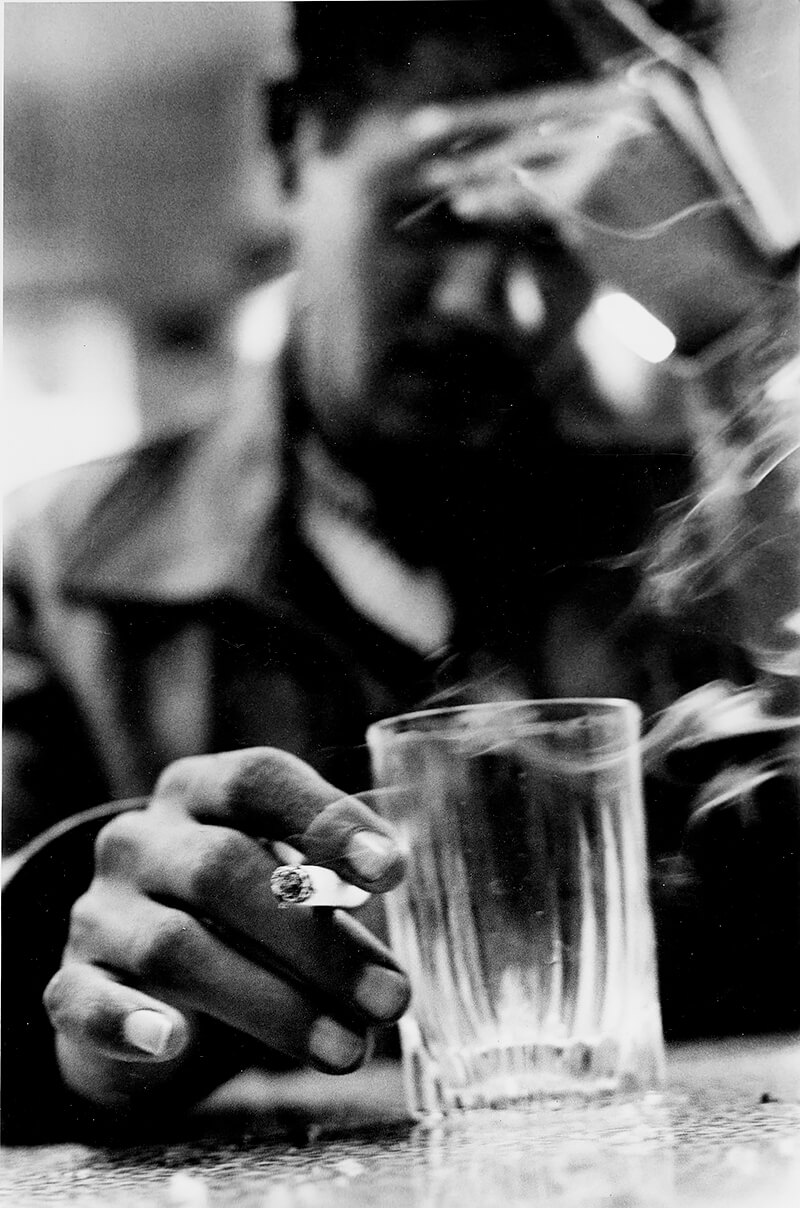
East Harlem Dinner © Steve Schapiro
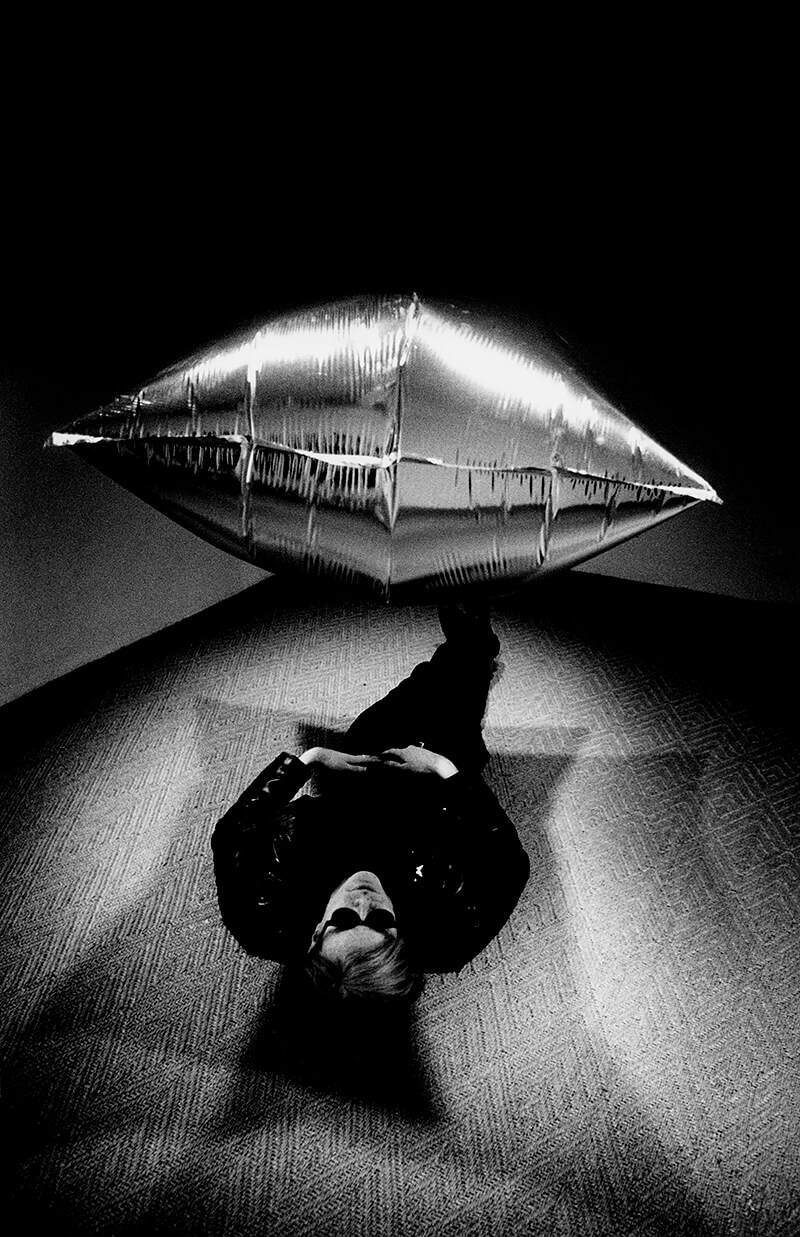
Warhol under the silver cloud balloon © Steve Schapiro
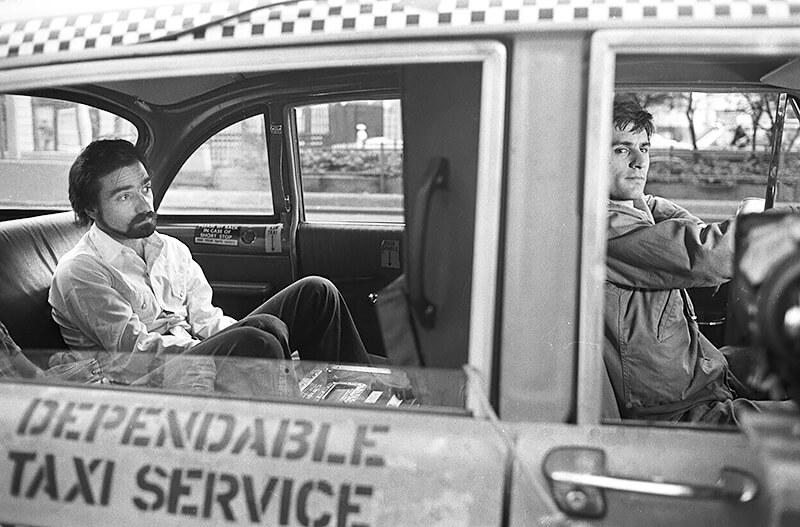
DeNiro and Scorsese in cab © Steve Schapiro
